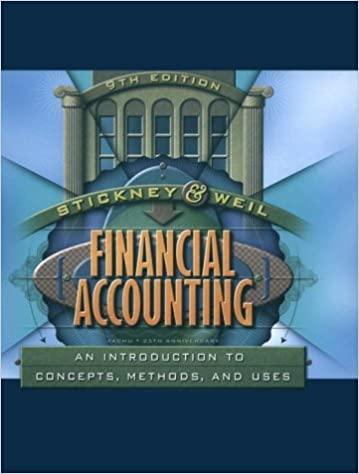Earnings-per-share calculations for a complex capital structure. Layton Ball Corporation has a relatively complicated capital structure that
Question:
Earnings-per-share calculations for a complex capital structure. Layton Ball Corporation has a relatively complicated capital structure that is it raises funds us- ing a variety of financing devices. In addition to common shares, it has issued stock options, warrants, and convertible bonds. Exhibit 12.18 summarizes some pertinent information about these items. Net income for the year is $9,500, and the income tax rate used in computing income tax expense is 40 percent of pretax income.
a. First, ignore all items of capital except for the common shares. Calculate earnings per common share.
b. In past years, employees have been issued options to purchase shares of stock.
Exhibit 12.18 indicates that the price of the common stock throughout the current year has remained steady at $25 but that holders of the stock options could exercise them at any time for $15 per share. That is, the option allows the holder to surrender it, along with $15 cash, and receive one share in return. Thus the number of shares would increase, which would decrease the earnings-per-share figure.
The company would, however, have more cash. Assume that the holders of options tender them, along with $15 each, to purchase shares. Assume that the company uses the cash to purchase shares for its own treasury at a price of $25 each.
Compute a new earnings-per-share figure. The firm does not count shares in its own treasury in the denominator of the earnings-per-share calculation.
c. Exhibit 12.18 indicates that there were also warrants outstanding in the hands of the public. The warrant allows the holder to turn in that warrant, along with $30 cash, to purchase one share of stock. If holders exercised the wairants, the number of outstanding shares would increase, which would reduce earnings per share.
However, the company would have more cash, which it could use to purchase shares for the treasury, reducing the number of shares outstanding. Assume that all holders of warrants exercise them. Assume that the company uses the cash to purchase outstanding shares for the treasury. Compute a new earnings-per-share figure. Ignore the information about options and the calculations in part b at this point. Note that rational warrant holders would not exercise the warrants for $30 when they could purchase a share for $25.
d. The firm also has convertible bonds outstanding. Each convertible bond entitles the holder to trade in that bond for 10 shares. If holders convert the bonds, the number of shares would increase, which would tend to reduce earnings per share.
On the other hand, the company would not have to pay interest and thus would have no interest expense on the bond because it would no longer be outstanding.

This would tend to increase income and earnings per share. Assume that all holders of convertible bonds convert their bonds into shares. Compute a new net income figure (do not forget income tax effects on the income produced by the interest saved) and a new earnings-per-share figure. Ignore the inlormalion about options and warrants and the calculations in parts b and c at this point.
e. Now consider all the previous calculations. Which sets of assumptions from parts
b, c, and d lead to the lowest possible earnings per share when they arc all made simultaneously? Compute a new earnings per share under the most restrictive set of assumptions about reductions in earnings per share.
f. Accountants publish several earnings-per-share figures for companies with complicated capital structures and complicated events during the year. The Wall Street Journal, however, publishes only one figure in its daily columns (where it reports the price-earnings ratio—the price of a share of stock divided by its earnings per share). Which of the figures computed previously for earnings per share do you think the Wall Street Journal should report as the earnings-per-share figure? Why?
Step by Step Answer:

Financial Accounting An Introduction To Concepts Methods And Uses
ISBN: 9780030259623
9th Edition
Authors: Clyde P. Stickney, Roman L. Weil





